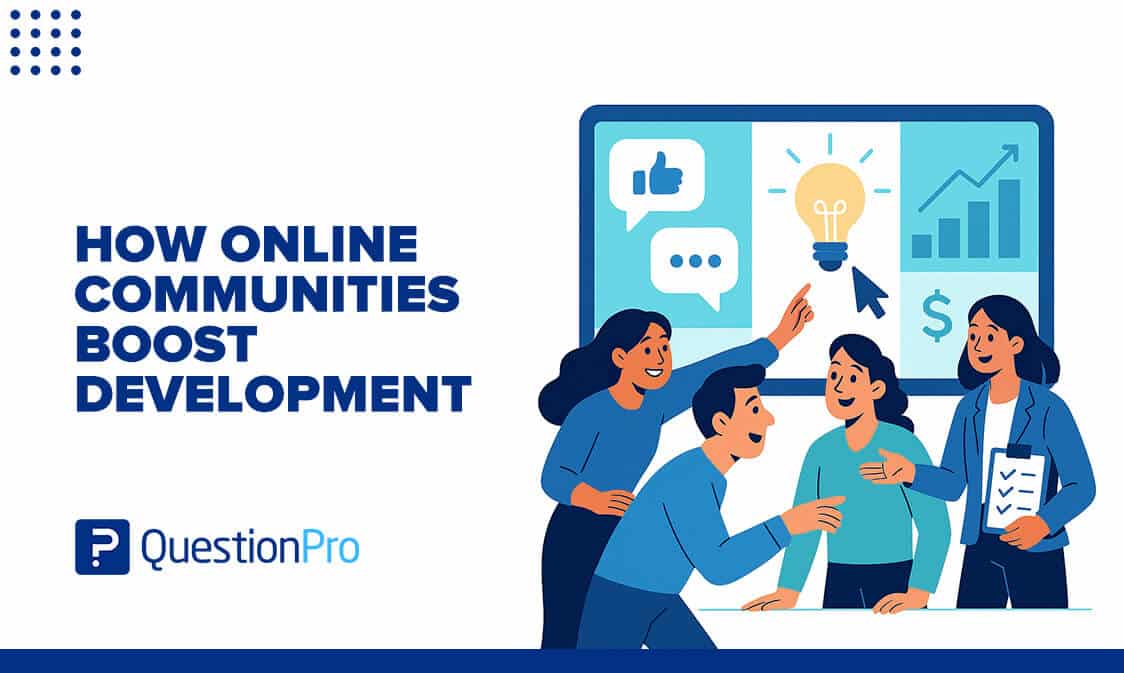
Every year, approximately 30,000 new consumer products are launched—yet only a small fraction survive in the long term. Studies show that up to 95% of new product launches fail. According to the Harvard Business Review, about two-thirds of consumer product launches don’t succeed.¹ Clayton Christensen from Harvard Business School sums it up in his book The Innovator’s Dilemma: most products don’t fail because they’re poorly made, but because they miss the mark on customer needs.²
Why So Many Product Innovations Fail?
There are many reasons for this. Often, there’s a lack of deep understanding of what customers really want or struggle with. Teams work in silos, decisions are made in isolation, and traditional market research often provides insights that are too late or too superficial. Add to that long innovation cycles and high costs—hardly an ideal environment for bold, yet well-founded, product development.

How Online Communities Solve These Problems
This is where digital communities come in. They allow companies to maintain a continuous, direct line to their target audience—not just occasionally, but consistently. Organizations that invest in their own communities today can react faster, develop with more precision, and bring products to market that are truly needed and wanted.
Instead of waiting weeks for study results, ideas, prototypes, or concepts can be validated with real users within hours. A Forrester study highlights the diverse potential of communities—as agile sources of feedback, idea generators, and insurance against costly missteps. At the same time, the expenses for traditional market research are drastically reduced, as many insights emerge directly and continuously from the dialogue with the target group.³
Community-based feedback also tends to have especially high data quality. Participants are typically engaged users who genuinely care about the product or topic. Their feedback is not only faster but also more thoughtful. This leads to higher validity and more informed decisions during product development.
Another advantage: the composition of the community can be precisely tailored. Instead of recruiting participants for each study, relevant users are included in the community from the start—such as early adopters, power users, specific age groups, or interest-based clusters.
This allows for much sharper profiling and repeatable feedback cycles with exactly the people who matter most in product development.
The community also provides valuable insights into which features are relevant for which users. Through targeted observation and feedback, usage patterns can be identified and features can be aligned with actual needs.
This helps optimize existing features and strategically prioritize new developments. What gets used more gains importance; what is ignored gets re-evaluated.
Specific tasks can also be assigned within the community to test aspects of the user experience, for example:
- Is a new process easy to understand?
- Is a feature used intuitively?
- Where are the friction points?
The user journey can be purposefully directed and observed to simulate real usage scenarios. This allows for precise analysis and improvement of not just functionality, but also clarity, value, and frustration potential.
A New Understanding of Product Development
Communities represent a new way of developing products: no longer disconnected from the market, but with the market. Products are not created behind closed doors—they’re co-created in open exchange, close to the people who will use them later.
Zalando as an Example: From Community to Innovation Engine
Zalando offers a particularly illustrative example. By building its own beta-testing community, the company transformed not just its research processes but its entire innovation culture. The costs of qualitative research were cut in half. Impressive on its own. But the real value lay in the depth and sustainability of the insights.
What Zalando built was more than a test panel—it became a learning system that grew smarter with every interaction. Developers described a snowball effect: each piece of feedback expanded the company’s knowledge, like a snowball gaining size as it rolls. With each round of feedback and iteration, understanding of the customer deepened. More and more nuances, preferences, and behavioral patterns became visible. Over time, this led to a dynamic, holistic picture of the target audience—far beyond what classic segmentation could offer.
The community also became a genuine partner in idea generation. Co-creation is the keyword here. Engaged users actively participated in development—not just reacting, but creating. They offered suggestions, debated features, evaluated designs, and contributed valuable impulses. One quote from the project captures this new mindset:
“People are willing to give feedback if they know that they are going to be heard and if they believe that something is going to happen with the feedback that they provide. We give customers the opportunity to make an impact.”

A Smooth, Confident Launch
Another often overlooked effect: the product launch itself.
Thanks to continuous beta testing, Zalando was able to roll out new features fully polished. No surprises, no bugs, no UX pitfalls. Everything had been tested, refined, and validated.
“All these initiatives were coming together in one big release. We were quite excited about it ourselves and we wanted the customers to also feel excited about that. So the question that we had: How can we release this new version of Zalando in a way that is impactful for the customer and it can be marketed upon release?”
And more: By comparing new features to existing ones, benchmarks could be established. It became clear: not only did users perceive the new features as a better experience—they saw them as added value.
Benchmarks also provide necessary context. For example, if 75% of users rate a new feature as “easy to use,” you can assess whether that’s above average or if there’s still room for improvement.
Traditionally, new features are rolled out slowly using A/B testing, often with uncertainty.
With community beta testing, everything is rigorously tested with real users in advance. The launch can happen all at once—bug-free, convincing, and presented as a real event.
Unlike traditional A/B testing, which relies heavily on anonymous behavioral data and leaves little room for explanation, an active community enables direct exchange. Users can report bugs immediately, suggest improvements, or share detailed feedback in their own words—often with screenshots or examples. The result: more meaningful feedback in real time.
Quality Assurance and Launch Confidence
Community validation ensures not just quality, but confidence.
A flawless full-scale rollout creates momentum that can be used for PR, campaigns, and user activation. A well-tested feature becomes a highlight—featured in newsletters, banners, and social media campaigns. If it works, it deserves the spotlight. And that’s what community testing enables.
Zalando’s team identified and fixed 363 bugs before the go-live—an impressive proof of the community approach’s power.
O-Data Meets X-Data
A particularly exciting insight from the case study: Zalando’s data teams were able to combine classic behavioral data (O-Data) with qualitative community insights (X-Data). Through exploratory analysis, they developed hypotheses about unusual user behavior—such as drop-offs or pain points.
When numbers couldn’t explain the behavior, the team turned to the community for answers. The result: qualitative insights that added context and clarity.
This turned the community into a strategic enhancement to analytics. Where numbers raise questions, real users provide answers.
A win-win situation: where analytics already provide clear results, the community isn’t burdened. Where questions remain, it becomes a powerful tool for deeper insight.
The Economic Impact: Measurable ROI Gains
From a financial standpoint, building your own online community is well worth it. According to a Forrester study, companies can not only improve product-market fit through continuous customer feedback, but also significantly reduce research costs—resulting in a considerable ROI boost.³
A simplified example (for illustration):
If a company spends €500,000 per year on market research and cuts that in half using a community, that’s €250,000 in savings. Add a 20% revenue boost from improved product development—e.g. €200,000 on €1 million in sales from a new product—and the result is:
Total ROI effect: €450,000 per year, with better market resonance.
Conclusion: Innovation Requires Proximity to the Customer
The success formula for future product development is simple but powerful: listen to your customers—and involve them actively. Online communities create exactly that space: for honest feedback, joint ideation, and true customer centricity. Those who harness the power of communities reduce risk, speed up processes, cut costs—and create products that truly move the market.
“Innovation is no longer about guessing what people want. It’s about building it with them.”
REFERENCES:
¹ Harvard Business Review, „Why Most Product Launches Fail“ (2011).
² Christensen, Clayton M. (1997). The Innovator’s Dilemma: When New Technologies Cause Great Firms to Fail. Boston, MA: Harvard Business School Press.
³ Forrester Consulting, „The Total Economic Impact of Insight Communities“ (2023). The figures given serve as a simplified, illustrative calculation example and are not taken directly from this source.
About the Author:

Bartosch Michalski
Bartosch Michalski is a Key Account Manager for the DACH/PL region. With years of experience in the sales and commercial sectors, Bartosch brings his expertise to QuestionPro in products focused on data collection and customer experience.







